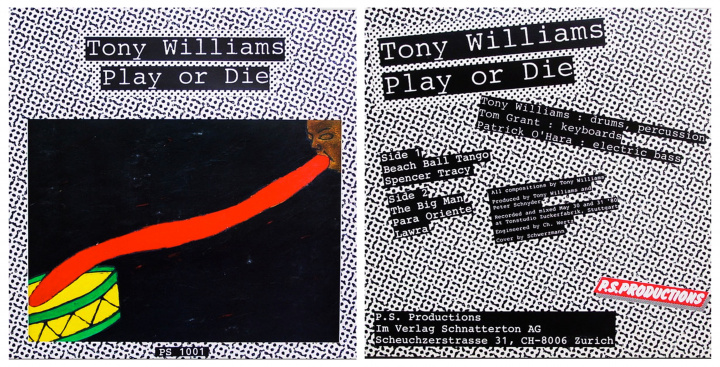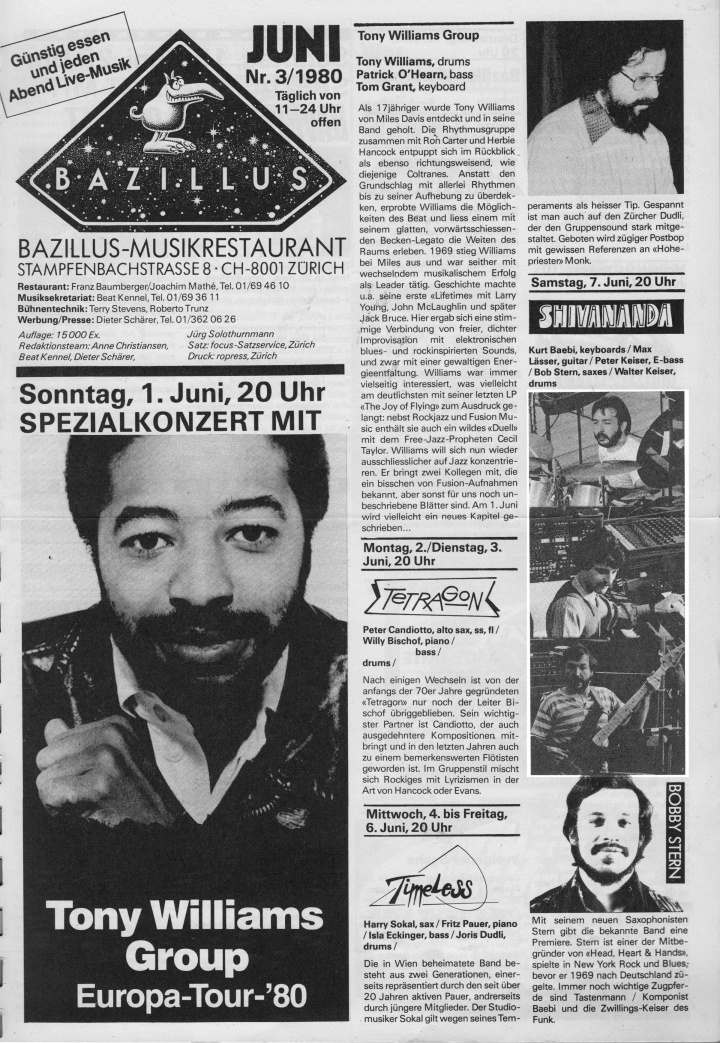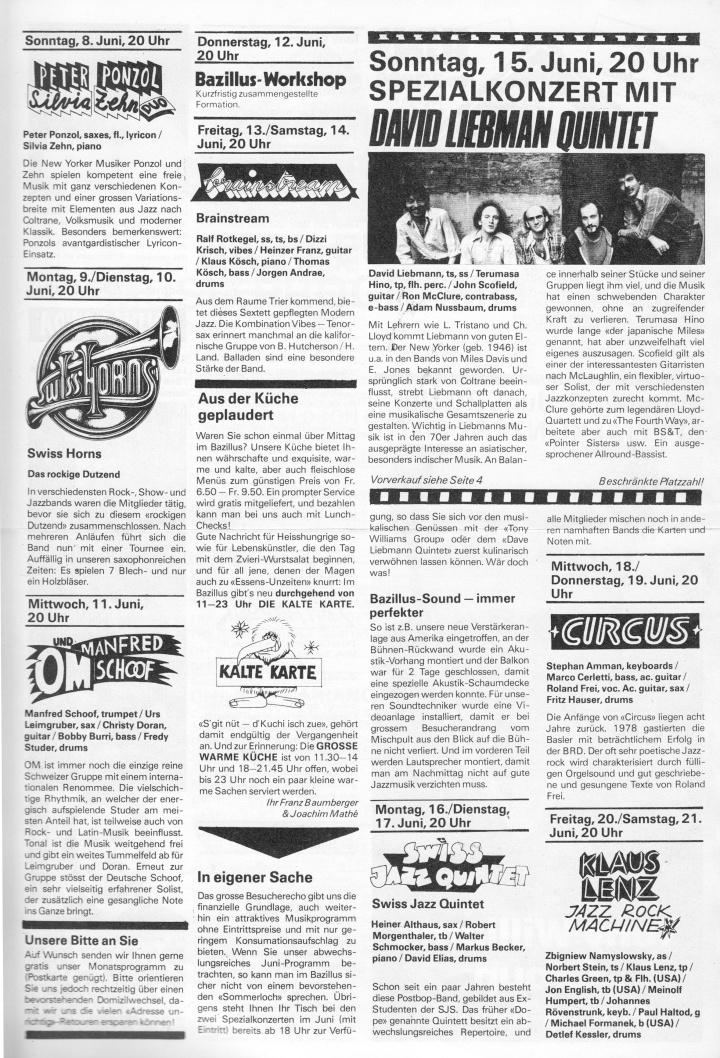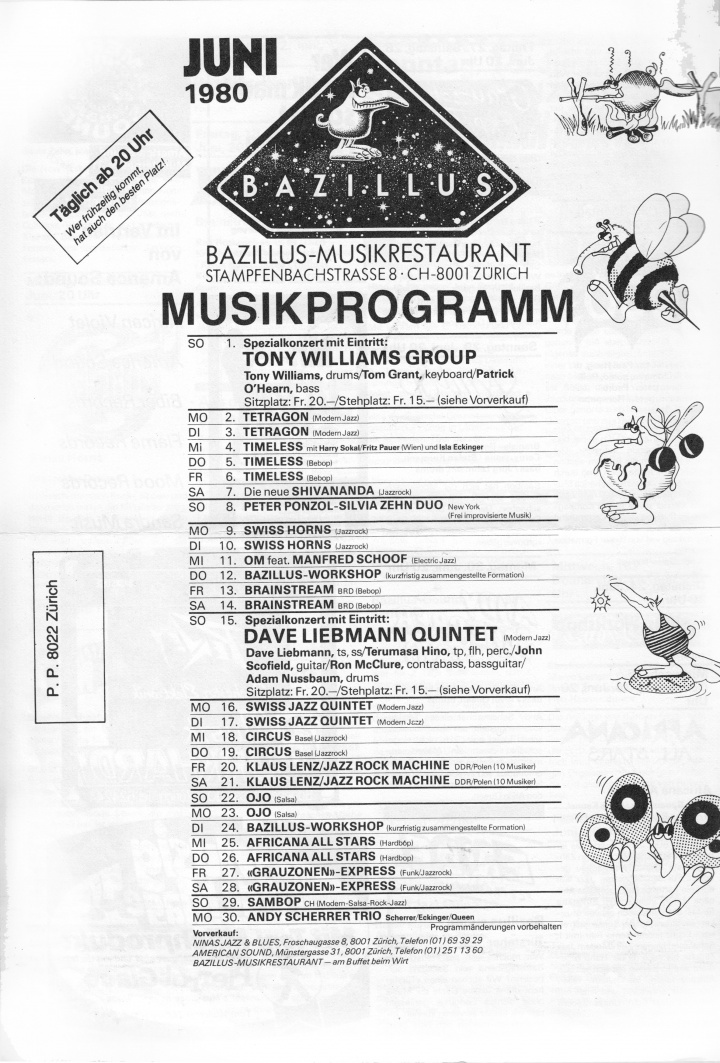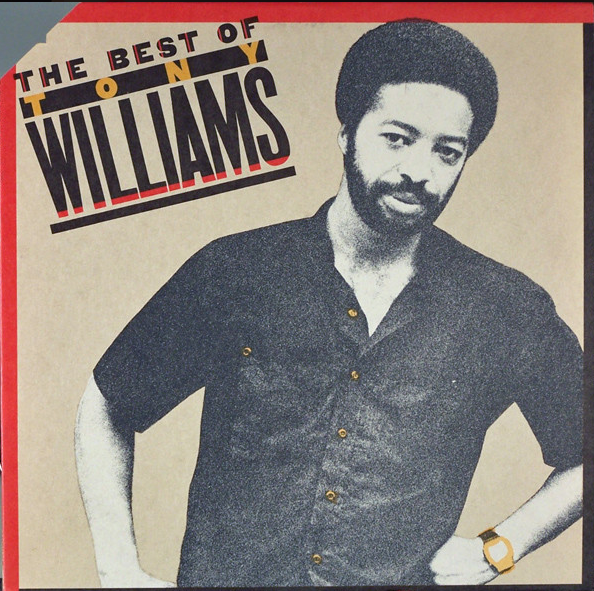Als 17jähriger wurde Tony Williams von Miles Davis entdeckt und in seine Band geholt. Die Rhythmusgruppe zusammen mit Ron Carter und herbie Hankock entpuppt sich im Rückblick als ebenso richtungsweisend, wie diejenige Coltranes. Astatt den grundschlagmit allerlei Rhythmen bis zu seiner Aufhebung zu überdecken, erprobte Williams die Möglichkeiten der Beat und liess einen mit seinem glatten, vorwärtsschiessenden becken Becken-Legato die Weiten des Raums erleben. 1969 stieg Williams bei Miles aus und war seither mit wechselndem musikalischen Erfolg als Leader tätig. Geschichte machte u.a. seine erste "Lifetime" mit Larry Young, John McLaughlin und später mit Jack Bruce. Hier ergab sich eine stimmige Verbindung von freier, dichter Improvisation mit elektronischen blues- und rockinspirierten Sounds, und zwar mit einer gewaltigen Energieentfaltung. Williams war immer vielseitig interessiert, was vielleicht am deutlichsten mit seiner letzten LP "Joy of Flying" zum Ausdruck gelangt: nebst Rockjazz und Fusionmusic enthält sie auch ein wildes "Duell" mit dem Free-Jazz-Propheten Cecil Taylor. Williams will sich nun wieder ausschliesslicher auf Jazz konzentrieren. Er bringt zwei Kollegen mit, die ein bisschen von Fusion-Aufnahmen bekannt, aber sonst für uns noch unbeschriebene Blätter sind. Am 1. Juni wird vielleicht ein neues Kapitel geschrieben...
(Text: Jürg Solothurnmann)
At the age of 17, Tony Williams was discovered by Miles Davis and brought into his band. In retrospect, the rhythm section with Ron Carter and Herbie Hankock turns out to be just as trend-setting as that of Coltrane. Instead of covering the basic beat with all kinds of rhythms until it was cancelled out, Williams tested the possibilities of the beat and let you experience the vastness of space with his smooth, forward-shooting cymbal legato. In 1969, Williams dropped out of Miles and has been a leader ever since, with varying degrees of musical success. History was made, among others, by his first "Lifetime" with Larry Young, John McLaughlin and later with Jack Bruce. Here, a coherent combination of free, dense improvisation with electronic blues- and rock-inspired sounds resulted in a tremendous display of energy. Williams has always been interested in many things, which is perhaps most clearly expressed with his last LP "Joy of Flying": in addition to rock jazz and fusion music, it also contains a wild "duel" with the free jazz prophet Cecil Taylor. Williams now wants to concentrate more exclusively on jazz again. He brings with him two colleagues who are somewhat familiar from fusion recordings but otherwise blank slates for us. On June 1, perhaps a new chapter will be written...
(Text: Jürg Solothurnmann)



